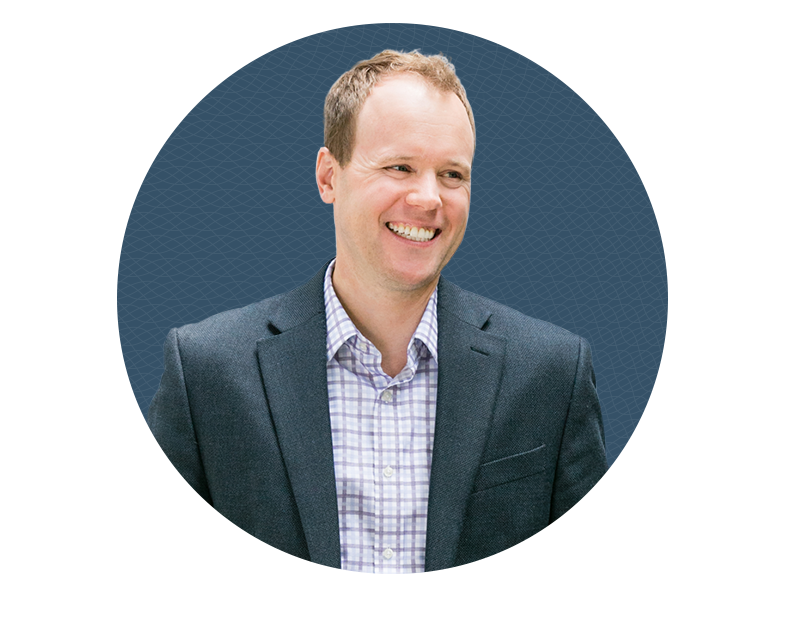If you’re like many individuals we encounter, you want to ensure your family’s future is secure and harmonious, but you’re grappling with concerns about potential family conflicts, tax implications, and the overwhelming complexity of estate planning.
“Where do I even begin?”
This is why many put off estate and legacy planning for years, sometimes decades. But now, as we covered in a recent article, the amount you can pass to your family tax free is about to be cut in half at the end of 2025, so it feels like the clock is ticking.
But there’s hope! In our work, we’ve seen families navigate potential conflicts, ensuring their plans reflect a fair and balanced approach. We’ve seen them save millions in future estate tax, integrating expertise in tax planning to maximize their legacy’s value. And most importantly, we’ve seen wealth unite families rather than divide them.
How? These three steps, combined with the right team of advisors, can help create a clear, simple blueprint for the impact you want your wealth to have on future generations…or your “estate plan”. And you still have time before the current all-time high estate tax exemption expires in 2025.
Create your legacy plan blueprint in three steps.
This simple three step process can take the confusion and overwhelm out of creating your estate plan. Along the way, however, you should expect to face tough decisions, work to understand new strategies, ask and answer difficult questions. This is why a qualified team is vital to your success. Your financial advising, legal, and tax professionals should not only possess the expertise you need, but the ability to work together to help you make clear, confident decisions.
Need a good team? Reach out and we can help you build one! With a qualified team in place, start with your goals.
Step 1: Start with an end goal.
Your legacy blueprint, or estate plan, is simply intended to arrange your assets to make the impact you want for the future. So, what do you want? Clarify your intentions for your family and/or charities you care about. This vision should guide the strategies you choose, ensuring that your estate planning aligns with your values and the legacy you wish to leave.
Once you have big picture goals, it can help to use the following framework. What percentage of your assets left when you pass away do you want to leave to:
- Family ______%
- Charity ______%
- Taxes ______%
Reducing taxes might be important to you, but we’ve heard from many who mistakenly started with trying to save as much tax as possible, got deep down in a strategic plan, then suddenly realized that they’ve been so focused on what they don’t want (losing money to taxes) that they don’t have a clear vision for what they do want. You’ll save yourself a great deal of time, money, and stress by starting with a vision for your ideal outcome.
Step 2: Evaluate and choose strategies.
Estate tax strategies can be complex. There is a seemingly endless list of trusts, tax shelters, legal documents, each with a confusing acronym. This is why the right team is so important. They can help you simply understand, evaluate, and choose the best strategies to bring your legacy vision to life.
- Start with how much income you need to enjoy life. You’ll use this to determine which assets and income you will keep in your estate or at least need some access to. See How Much You Need to Retire for more. This will help you define which assets can move out of your estate to help save taxes and fulfill your legacy plan.
- Look for opportunities to discount your assets. You can use certain estate tax strategies to shrink the estate tax value of assets such as business and real estate, reducing the amount your family would lose to taxes.
- Freeze the value of your estate. As discussed in How to Avoid $2.6 Million in Estate Taxes, anything over $13.61 million is subject to up to 40% estate taxes and this threshold is set to cut in half at the end of 2025. Once you have applied relevant discounts, you can “freeze” that valuation by moving assets out of your estate into certain kinds of trusts This means any future growth on these assets takes place outside your estate rather than passing the asset later at a higher value. You get the added benefit of using the current $13.61 million tax-free exemption before it is too late.
- Create liquidity for taxes. Now that you have created a strategy to minimize taxes, you can use tax free funding tools like life insurance designed for estate transfer to create instant cash to cover the taxes for your beneficiaries. With money available to pay any taxes, they won’t be forced to sell illiquid assets like business interests or real estate. And, because of its tax-free death benefit, using life insurance in your estate plan often increases the amount of wealth transferred to your family or charity.
Step 3: Communicate the strategy to your family.
With your plan finished, it’s time to tell your family, the people most affected by your plan. This can be done in a family meeting and can even be facilitated by your financial team. This might include explaining the long-term legacy vision, goals for certain assets like funding education or supporting charity, assigning family governance responsibilities, and making sure your beneficiaries and trustees understand their roles.
Crafting your legacy doesn’t have to be full of complexity and worry. Our team here at Alterra is here to help you create a path towards family harmony and financial alignment.
Don’t forget: your current $13.61 million exemption is set to cut in half on Jan 1, 2026, which means you could face an instant $2.6 million or more in estate tax…per spouse! And because this planning takes time to be done right, the time to get started is now. Scheduling a conversation with our team is a great place to start!
The “Alterra” name was coined by joining the Latin roots “alter”, the origin of the word “altruism” with “terra” meaning earth or land. This name reflects the company philosophy of “clients before profits” and providing firmly grounded advice.

